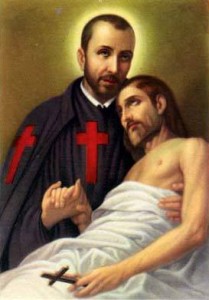The Catholic Handbook for Visiting the Sick and Homebound
Chicago: Liturgy Training Publications, 2009 [an annual
publication]; 245 pages. $5.00.

Since 2006 Liturgy Training Publications has been publishing
this annual publication to assist the lay ministers called by the pastor to
help him in his ministry of visiting the sick and homebound. At the time I was
an editor at LTP and The Catholic Handbook for Visiting the Sick and Homebound
was one of my responsibilities but since then there’s been some slight improvements to the original manuscript. This resource is based on experience; I had knowledge that many
people neither had the proper formation nor the familiarity with the ritual
books enough to know which were the appropriate rites for the laity to exercise
their ministry. Not infrequently did I hear the horror stories of liturgical
abuse in the hospitals, prisons, healthcare centers and in homes. Gross
ignorance of what the Church expected and a lack of pastoral skill caused more
harm to the faith. Three years after the initiating this publication, but no
longer in the employ of LTP but now in pastoral life, I continue to hear about and
witness the spiritual malpractice of lay ministers when it comes to these
matters. I believe God’s people need to hear the Gospel proclaimed and the
rites respected; all the more for those who are ill or weak due to age. This
publication is not a panacea but it does ably assist in allowing Christ to be
present to those in need.
This Handbook has all the tools necessary to make a proper pastoral visit to those who request the ministrations of the Church. The book has an excellent
introduction, the nine rites available to the laity for such pastoral visits, the
Gospel and holy day readings, a brief explanation of the readings and the list
of patron saints. The Handbook shows the user how to make room for prayer in
special circumstances.
Benedictine Sister Genevieve Glen’s introduction is
essential reading. It’s not an overstatement to say that if you skip her
introduction then you will miss some very essential theological and pastoral
insights for effective ministry of care. For example, the introduction covers
elements “using the book,” being pastorally present, what needs to be done
prior to a visit, carrying the Blessed Sacrament, prayer, use of music, and the
like. Moreover, Sister Genevieve leads the user through what the rites mean,
what needs special attention and the basics for good interpersonal skills. Remember, the
Church’s ministry is always personal. The ministry is directed toward the
patient, the family and at times the healthcare professionals. As Sister
Genevieve reminds the user: you bring a word of God to those in need, those
visited also witness Christ to us –ministry is a two-way street.
The rites are taken from the Book of Blessings and the
Pastoral Care of the Sick: Rites of Anointing and Viaticum. The Scripture
readings are taken from the Lectionary. The Handbook carries the imprimatur of
the Vicar General of the Archdiocese of Chicago.

Recent additions to this volume are the “Order of Blessing
of a Person Suffering from Addiction or from Substance Abuse,” “Order for the
Blessing of a Victim of Crime or Oppression and the “Order of Blessing of
Parents after a Miscarriage.” These new orders are very welcomed today since we
often neglect the spiritual needs of those suffering from addiction, substance
abuse, and the after-effects of crime, oppression and miscarriage. How often do
we pray with and for those living with these experiences in their hearts? As
ministers of Jesus Christ, priests and laity always need to keep in mind those
who suffer.
Often overlooked is idea that it is Christ under the power
of the Holy Spirit who works through the rites, not the personality of the
minister. Let’s be clear: Christ uses us to do His work; Christ does not do our
work. Our responsibility is to act as Christ would act because it is He who
heals and saves through ministry. The Church has beautifully responded to this
human need with the appropriate rites. In doing so, the Church closes off the
possibility for those who would want to do their own thing and doing it
haphazardly.
Personal preparation by making the rites and Gospel message through
prayer and study will help the user of this book more effective. The
encouragement is that you enter prayerfully and deliberately into the heart of
the Church through the Church’s rites. Every lay person bringing Holy Communion
to those not present at the Sunday celebration of Mass ought to get The
Catholic Handbook for Visiting the Sick and Homebound annually. This book is also available in Spanish.
 Camillus went to Rome for medical treatment on his leg and he met Saint Philip Neri, the great apostle to Rome. Because he lacked an education, Camillus began to study with children when he was 32 years old. Sounds like he followed in the footsteps of Ignatius of Loyola.
Camillus went to Rome for medical treatment on his leg and he met Saint Philip Neri, the great apostle to Rome. Because he lacked an education, Camillus began to study with children when he was 32 years old. Sounds like he followed in the footsteps of Ignatius of Loyola.



